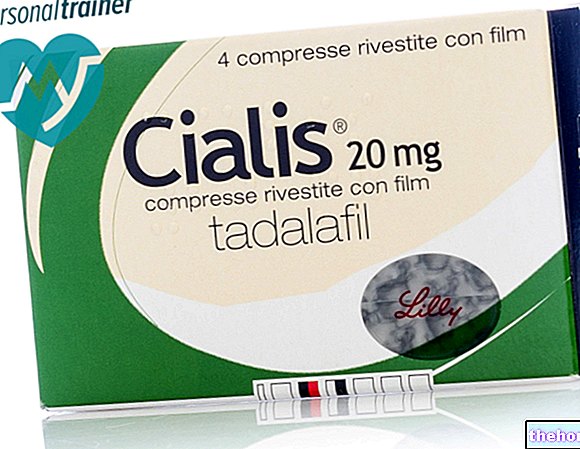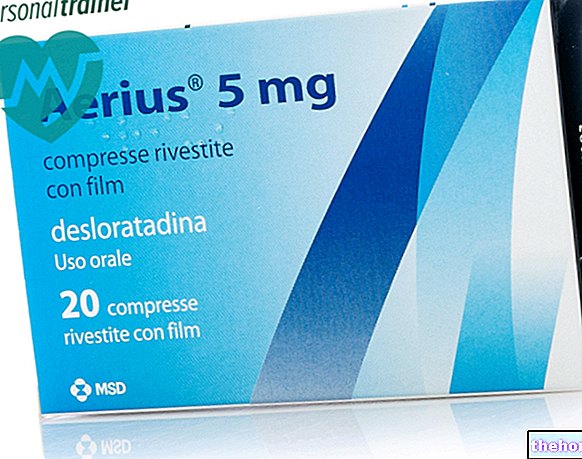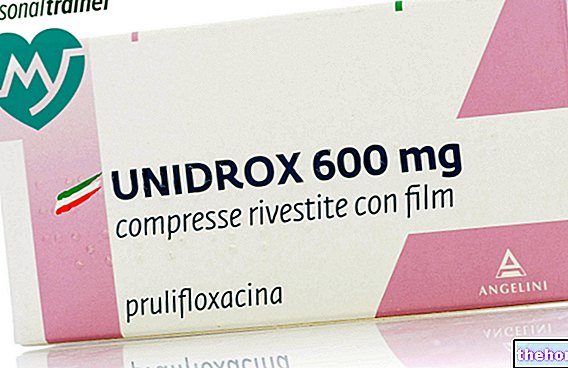Active ingredients: Iron (Ferriprotinate), Folic acid (Folinic acid)
FERROFOLIN 40 mg / 15 ml + 0.185 mg / 15 ml oral solution
Why is Ferrofolin used? What is it for?
Ferrofolin is a medicine that contains iron and folinic acid used in the prevention and treatment of iron and folate deficiency states (B vitamins) in the body.
Ferrofolin is used to treat certain types of anemia:
- anemia characterized by red blood cells containing little hemoglobin (hypochromic anemia);
- anemia characterized by red blood cells having a normal hemoglobin content (normochromic anemia);
- childhood anemias due to a low amount of iron or folate (macrocytic and megaloblastic anemias due to iron or folate deficiency);
- anemia in pregnancy, in the period after childbirth and during lactation.
Contraindications When Ferrofolin should not be used
Do not take Ferrofolin
- if you are allergic to the active substances or any of the other ingredients of this medicine (listed in section 6);
- if you have too much iron in your body (hemochromatosis and hemosiderosis) or problems with the way iron is used in the body (sideroacrestic anemia);
- if you have anemia that is not caused by a lack of iron and folate (aplastic or haemolytic anemia);
- if you have anemia due to vitamin B12 deficiency (megaloblastic anemia secondary to vitamin B12 deficiency). In this case, you can only take Ferrofolin together with vitamin B12;
- if you have liver problems (liver cirrhosis) or pancreas problems (chronic pancreatitis) as these may be due to too much iron in the body.
Precautions for use What you need to know before taking Ferrofolin
Talk to your doctor or pharmacist before taking Ferrofolin.
- Consult your doctor and take special care if you are intolerant to milk proteins, as if you take this medicine you may have an adverse reaction.
- It is not recommended to take this medicine for more than 6 months, unless your doctor has decided to do so.
- If you need to have a blood stool test, tell your doctor or nurse first that you are taking Ferrofolin, as this medicine can change the test results.
Children and adolescents
This medicine can be used in children and adolescents.
Interactions Which drugs or foods can modify the effect of Ferrofolin
Tell your doctor or pharmacist if you are taking, have recently taken or might take any other medicines.
There are medicines which can alter the effect of Ferrofolin or whose effect can be altered by Ferrofolin, in particular:
- Ferrofolin could reduce the efficacy of some medicines used in the treatment of tumors and leukemia (aminopterin, methotrexate and other pterin derivatives);
- Ferrofolin may reduce the effectiveness of some antibacterial medicines (such as sulfonamides, trimethoprim);
- Taking chloramphenicol (a medicine used to treat infections) may delay the effectiveness of iron therapy;
- The simultaneous intake of vitamin C (ascorbic acid) can increase the absorption of iron in your body;
- The simultaneous intake of drugs against stomach acid (antacids) can decrease the absorption of iron in your body;
Take Ferrofolin at least two hours after the following medicines because the iron contained in this drug can reduce their effectiveness:
- medicines used to treat infections: tetracyclines, quinolones, penicillamine;
- medicines used for bone diseases such as osteoporosis: bisphosphonates;
- medicines used for thyroid problems: thyroxine;
- medicines used for Parkinson's disease: levodopa, carbidopa, alpha-methyldopa.
Ferrofolin with food, drink and alcohol
If you consume vegetables, milk, coffee or tea, take Ferrofolin at least two hours after these foods as they can reduce the amount of iron absorbed by your body.
Warnings It is important to know that:
Pregnancy and breastfeeding
The medicine can be used during pregnancy and breastfeeding.
If you are pregnant or breast-feeding, think you may be pregnant or are planning to have a baby, ask your doctor or pharmacist for advice before taking this medicine.
Driving and using machines
This medicine does not normally affect the ability to drive or use machines.
Ferrofolin contains sorbitol
If you have been told by your doctor that you have an intolerance to some sugars, contact your doctor before taking this medicinal product.
Ferrofolin contains methyl para-hydroxybenzoate sodium salt and propyl para-hydroxybenzoate sodium salt.
They can cause allergic reactions (even delayed)
Dose, Method and Time of Administration How to use Ferrofolin: Posology
Always take this medicine exactly as your doctor or pharmacist has told you.
If in doubt, consult your doctor or pharmacist. Ferrofolin must be taken by mouth.
The recommended dose is:
Adults
1 to 2 containers per day, according to the doctor's instructions, divided into 2 doses, preferably before meals.
Use in children
The recommended dose for children should be calculated based on your child's weight by multiplying:
weight of the child in Kg X 1.5 ml
The calculated quantity must be divided into two different doses, preferably before the two main meals.
Your doctor may change the recommended dose
Instructions for preparation:
To open the container, remove the cap, press firmly on the tank cap so that the powder falls into the solution. Shake until the powder dissolves.
Remove the tank cap and drink the solution directly from the container or in plain water.
Once the solution has been obtained, it is recommended to use the preparation during the day.
The duration of treatment with Ferrofolin will be determined by your doctor.
Overdose What to do if you have taken too much Ferrofolin
If you take more Ferrofolin than you should
In case of ingestion / taking by mistake of an excessive quantity of Ferrofolin, notify your doctor immediately or go to the nearest hospital.
If you have taken more medicine than prescribed you may have: pain in the middle area of the abdomen between the ribs and the navel (epigastralgia), nausea, vomiting, diarrhea and vomiting containing blood. In addition to these symptoms, drowsiness, paleness, bluish discoloration of the skin (cyanosis), and shock can occur which is a situation due to a low blood supply in the body and which can lead to coma.
If you forget to take Ferrofolin
Do not take a double dose to make up for a forgotten dose.
Side Effects What are the side effects of Ferrofolin
Like all medicines, this medicine can cause side effects, although not everybody gets them.
Very rarely, and particularly after taking the higher doses, stomach and intestinal disorders such as diarrhea, constipation, nausea, pain in the central area of the abdomen between the ribs and the navel may occur (epigastralgia).
These tend to disappear after you stop taking Ferrofolin or after reducing the dose.
Iron preparations can color the stool black or dark gray, this need not worry
Compliance with the instructions contained in the package leaflet reduces the risk of undesirable effects.
Reporting of side effects
If you get any side effects, talk to your doctor or pharmacist. This includes any possible side effects not listed in this leaflet. You can also report side effects directly via the national reporting system at https://www.aifa.gov.it/content/segnalazioni-reazioni-avverse
By reporting side effects you can help provide more information on the safety of this medicine.
Expiry and Retention
Do not store above 25 ° C.
Keep this medicine out of the sight and reach of children.
Do not use this medicine after the expiry date which is stated on the package after "EXP". The expiry date refers to the last day of that month.
Do not throw any medicines via wastewater or household waste. Ask your pharmacist how to throw away medicines you no longer use. This will help protect the environment.
What Ferrofolin contains
Each single-dose container contains:
- in the solution:
- The active ingredient is Fe3 + 40 mg (as ferriprotinate)
- The other ingredients are sorbitol E420, propylene glycol, methyl parahydroxybenzoate sodium salt, propyl parahydroxybenzoate sodium salt, black cherry flavor, sodium saccharin, purified water.
- in the tank cap:
- The active ingredient is folinic acid 0.185 mg (as calcium folinate pentahydrate)
- The other ingredients are mannitol E421.
Description of what Ferrofolin looks like and contents of the pack
Ferrofolin comes in 10 single-dose vials of 15 ml. Each vial contains the solution and is closed by a reservoir cap in which there is the powder.
Source Package Leaflet: AIFA (Italian Medicines Agency). Content published in January 2016. The information present may not be up-to-date.
To have access to the most up-to-date version, it is advisable to access the AIFA (Italian Medicines Agency) website. Disclaimer and useful information.
01.0 NAME OF THE MEDICINAL PRODUCT
FERROFOLIN 40 MG / 15 ML + 0.185 MG / 15 ML ORAL SOLUTION
02.0 QUALITATIVE AND QUANTITATIVE COMPOSITION
Each 15ml single-dose container contains:
Active principle: Fe3 + 40 mg (as ferriprotinate).
In the tank cap:
Active principle: folinic acid 0.185 mg (as calcium folinate pentahydrate).
Excipients with known effects: sorbitol E420, methyl parahydroxybenzoate sodium salt, propyl parahydroxybenzoate sodium salt.
For the full list of excipients, see section 6.1.
03.0 PHARMACEUTICAL FORM
Oral solution.
04.0 CLINICAL INFORMATION
04.1 Therapeutic indications
Prevention and treatment of iron and folate deficiency states: hypochromic, normochromic anemias, certain macrocytic and megaloblastic anemias of childhood secondary to insufficient iron intake or absorption and lack of folate intake or synthesis; anemia in pregnancy, in the puerperium and in the lactation period.
04.2 Posology and method of administration
Dosage
Adults
1 to 2 containers per day (equivalent to 40-80 mg of Fe3 + and 0.235-0.470 mg of calcium folinate pentahydrate, respectively), according to medical judgment, divided into 2 doses, preferably before meals.
Pediatric population
Using the container, take 1.5 ml / kg / day (equal to 4 mg / kg / day of Fe3 +), or according to medical judgment, divided into 2 doses, preferably before meals.
The contents of the single-dose container can be taken as it is or diluted in natural water.
Duration of treatment: the treatment must be continued until the body has reconstituted its normal iron stores (usually two to three months).
04.3 Contraindications
Hypersensitivity to the active substances or to any of the excipients listed in section 6.1.
Hemosiderosis, hemochromatosis. Aplastic, haemolytic anemias or due to defective use of iron (sideroacrestics). Megaloblastic anemias secondary to vitamin B12 deficiency (if not administered in association with it). Chronic pancreatitis, cirrhosis of the liver secondary to hemochromatosis.
04.4 Special warnings and appropriate precautions for use
The cause of iron deficiency or anemia must be identified; an etiological treatment of these conditions, if available, should be established alongside iron therapy.
The drug should be used with caution in patients with milk protein intolerance, in which allergic reactions may occur.
The preparation does not give rise to addiction or addiction risks.
The duration of continuous administration should not exceed 6 months, except in the presence of continuous bleeding, menorrhagia or pregnancy.
Single-dose containers of Ferrofolin contain sorbitol, therefore patients with rare hereditary problems of fructose intolerance should not take this medicine.
The single-dose containers of Ferrofolin contain parabens (methyl para-hydroxybenzoate sodium salt, propyl para-hydroxybenzoate sodium salt), which can cause allergic reactions (even delayed).
Ferrofolin can interfere with laboratory tests for the detection of occult blood in the stool.
04.5 Interactions with other medicinal products and other forms of interaction
Iron can reduce the absorption or bioavailability of: tetracyclines, bisphosphonates, quinolones, penicillamine, thyroxine, levodopa, carbidopa, alpha-methyldopa. Ferrofolin should therefore be taken at least 2 hours after taking these medicines.
Iron absorption can be increased by the concomitant administration of more than 200 mg of ascorbic acid or reduced by the concomitant administration of antacids. Chloramphenicol may delay the response to martial therapy.
No drug interactions have been reported during concomitant treatment with H2 antagonists.
Substances that bind to iron (such as phosphates, phytates and oxalates) contained in vegetables and milk, coffee or tea inhibit the absorption of iron. Ferrofolin must therefore be taken at least 2 hours after taking these foods.
Some antineoplastic and antileukemic drugs (aminopterin, methotrexate and other pterin derivatives) act as competitive folate antagonists. Therefore, in the case of neoplastic diseases or leukemia treated with antifolics, the administration of Ferrofolin as well as other preparations based on folic or folinic acid must be carefully avoided.
For similar phenomena of antagonism, it is also necessary to avoid the administration of the preparation at the same time as some antibacterial drugs (sulfonamides, diaminobenzylpyrimidines: eg trimethoprim), the effectiveness of which could be reduced.
04.6 Pregnancy and lactation
Iron3 + and folinic acid can be used during pregnancy and lactation. There are no precautions for use in case of pregnancy or lactation, as Ferrofolin is indicated in pregnancy and lactation anemia.
04.7 Effects on ability to drive and use machines
No data are available on the effects of the product on the ability to drive and use machines, however this effect is unlikely.
04.8 Undesirable effects
Very rarely, and in particular with too high dosages, gastrointestinal disturbances (diarrhea, constipation, nausea, epigastralgia) may occur which regress with the suspension of treatment or dose reduction.
Iron preparations can stain stool black or dark gray.
Reporting of suspected adverse reactions
Reporting of suspected adverse reactions occurring after authorization of the medicinal product is important as it allows continuous monitoring of the benefit / risk balance of the medicinal product. Healthcare professionals are asked to report any suspected adverse reactions via the national reporting system. "address: www.agenziafarmaco.gov.it/it/responsabili.
04.9 Overdose
In the event of an overdose of iron salts, the patient may present with epigastralgia, nausea, vomiting, diarrhea and haematemesis, often associated with drowsiness, pallor, cyanosis, shock, up to coma.
Treatment must be as prompt as possible and consists of administering an emetic, possibly followed by gastric lavage and practicing suitable supportive therapy.
The advisability of administering an iron chelator such as desferoxamine should also be considered.
05.0 PHARMACOLOGICAL PROPERTIES
05.1 Pharmacodynamic properties
Pharmacotherapeutic group: antianemic drug based on trivalent iron in combination with folic acid.
ATC code: B03AD49.
Mechanism of action
Folinic acid (Leucovorin, citrovorum factor) is the formyl derivative of folic acid, of which it represents the biologically active form. The direct administration of folinic acid therefore allows to skip some metabolic steps and to make up for vitamin deficiencies even in the absence of liver and medullary enzymes responsible for the transformation and activation of folic acid. Folinic acid plays an important role in purine and pyrimidine synthesis and it is indispensable for the synthesis of DNA, especially at the level of hematopoietic tissue. In fact, folinic acid is active in all anemia due to folate deficiency.
Pharmacodynamic effects
Ferrofolin is an "original combination of folinic acid and an iron-protein complex, containing 5% ± 0.2% trivalent iron, in which iron is bound to succinylated milk proteins.
Due to its particular solubility profile, the iron proteinsuccinylated precipitates in the gastric environment, keeping the iron bound to itself; it then solubilizes in the alkaline pH of the duodenum, thus allowing the absorption of the iron itself by the intestinal mucosa, while the protein component of the molecule is digested by the pancreatic proteases.
Clinical efficacy and safety
The experiences carried out indicate that Ferrofolin exerts a good anti-anemic action.
05.2 "Pharmacokinetic properties
Absorption
It is not possible to carry out traditional pharmacokinetic studies with iron-based compounds since, as in the case of iron proteinsuccinylated, the protein fraction is digested by the gastrointestinal juices and the iron is absorbed in quantities depending on the needs of the organism.
However, iron proteinsuccinylated is well absorbed by the oral route and gives rise to very considerable increases in iron in a short time, even though it never reaches thresholds incompatible with normal homeostasis, even for high doses.
From the experiments carried out in animals, it appears that, compared to the more common compounds based on iron, the iron proteinsuccinylated determines a better absorption of iron and an increase in sideremia over time.
Using calcium folinate labeled with 14C and 3H, results corresponding to those obtained with the microbiological assay were obtained. Oral administration of folinic acid is followed by rapid absorption and leads to a rapid increase in folate.
Elimination
Under normal conditions, iron losses are very limited. Most of this is eliminated through menstrual losses and in negligible quantities through bile, sweat and peeling of the skin.
05.3 Preclinical safety data
Iron proteinsuccinylated has very favorable toxicity and tolerability characteristics. Acute toxicity after oral administration in rats and mice demonstrated an LD50> 4000 mg / kg; after i.p. administration the LD50 resulted: in the rat of 700 mg / kg (575-870); in mice of 710 mg / kg (584-857). By administering the product at high doses (up to 200 mg / kg / day per os) even for a prolonged period of time (up to one year in the animal), no significant toxicological alterations are highlighted. during pregnancy, the ferro-proteinsuccinylated does not alter the normal embryonic or fetal development.
In practice, folinic acid has no toxicity characteristics. For os, the LD50 is higher than 7000 mg / kg in mice.
06.0 PHARMACEUTICAL INFORMATION
06.1 Excipients
In the container:
Sorbitol E420, propylene glycol, methyl para-hydroxybenzoate sodium salt, propyl para-hydroxybenzoate sodium salt, black cherry flavor, sodium saccharin, purified water.
In the tank cap:
Mannitol E421.
06.2 Incompatibility
There is a chemical-physical incompatibility with alkalis and strong acids or with reducing substances.
06.3 Period of validity
2 years.
06.4 Special precautions for storage
Do not store above 25 ° C.
06.5 Nature of the immediate packaging and contents of the package
Single-dose containers: box with 10 single-dose containers of 15 ml each, fitted with a 100 mg tank cap of soluble granular.
06.6 Instructions for use and handling
To open the container, remove the top cap. Press firmly on the reservoir cap so that the powder falls into the solution. Shake until solubilization. Remove the tank cap and drink the solution directly from the single-dose container or in water.
Once the solution has been obtained, it is recommended to use the preparation during the day.
No special instructions for disposal.
07.0 MARKETING AUTHORIZATION HOLDER
Pharmaceutical Laboratory S.I.T. S.r.l. - Via Cavour 70 - 27035 Mede (PV).
08.0 MARKETING AUTHORIZATION NUMBER
A.I.C. n. 025928045.
09.0 DATE OF FIRST AUTHORIZATION OR RENEWAL OF THE AUTHORIZATION
Date of first authorization: 18/09/1987
Date of most recent renewal: 01/06/2010
10.0 DATE OF REVISION OF THE TEXT
29/10/2014























-nelle-carni-di-maiale.jpg)




